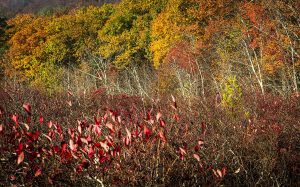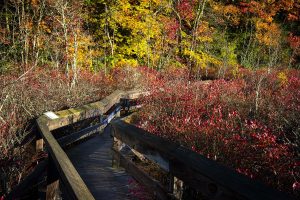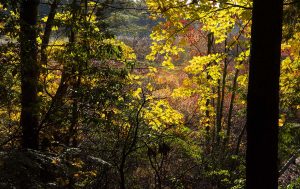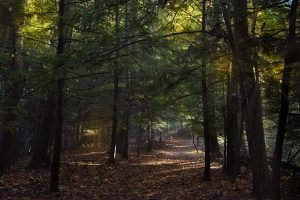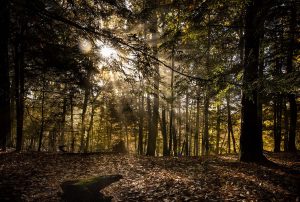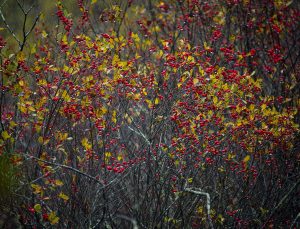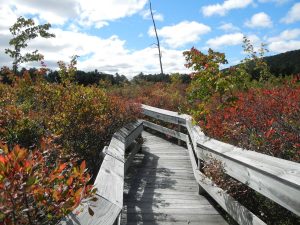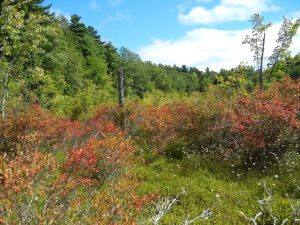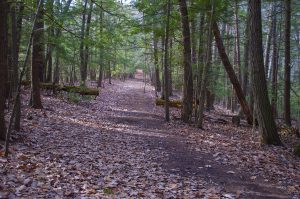Bog
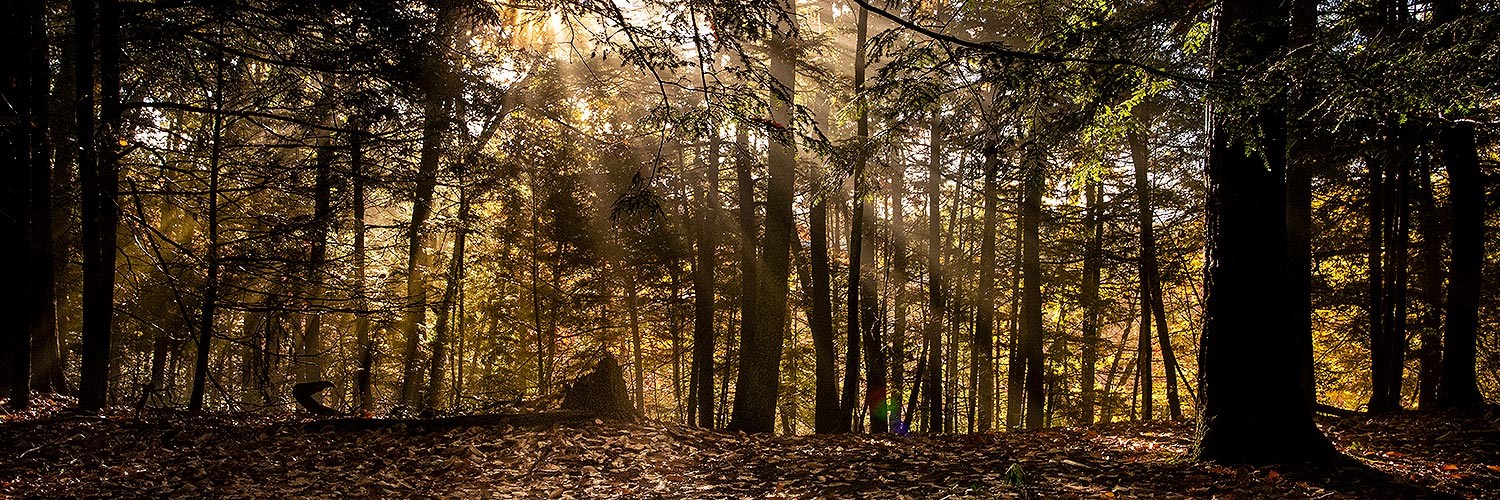
ACREAGE: 39 • YEAR ACQUIRED: 1999
Location
Trail starts ¼ mile down North Saddle Ridge Drive, on the right side of the road. Two stone pillars mark the entrance.
Distance
1 mile round trip
Terrain
A flat trail leads out to a very steep, downhill path to the 150-foot wooden boardwalk over the bog.
Features
This hike takes you out on a wide, flat trail along an esker (a large deposit of glacial gravel left by the last Ice Age 10,000 years ago) to a boardwalk that stretches out over the bog. Simsbury Land Trust constructed the short, elevated walkway to enable people to view the habitat up close. You will see a series of education signs touching on the unique ecosystem found here. Watch for signs marking the entrance to the bog walk on the right side of the trail.
Although common in northern North England and Canada, bogs are far less common in Connecticut, and this is the only sizeable bog habitat in Simsbury. The water supply for this 40-acre bog comes only from rainwater and underground spring and is poor in oxygen and nutrients. The high acidity of bog water interferes with plant’s ability to absorb both water and nutrients. This creates a habitat very different from that of the swamp to the north of the esker. Best known for their sphagnum moss, which “floats” on the water, bogs are also home to a number of plants and animals seldom found in the more common red maple swamps. Characteristic leatherleaf plants contribute to the mat while highbush blueberries and swamp azaleas are specially adapted for this environment and thrive on the edges. Small maples are even seen growing on the mat of the moss. Other plants found in this bog include red chokeberry, common bog cotton, and three-way sedge. Few animals live in the bog, although many pass through it in search of food or shelter. Permanent residents include insect-eating birds, garter snakes, frogs, and turtles that fee on large insects. While relaxing on the boardwalk enjoy a fine view of West Moutain.

